If you’re already growing succulents, you know how versatile and low-maintenance these plants can be. If you’re new to the succulent world, it might be time to take a look at these plants that thrive in containers both indoors and out. In either case, consider taking your succulent container garden to the next level by rethinking your container options, perhaps using sentimental items you’d like to keep but don’t know what to do with, or even by creating a miniature garden.
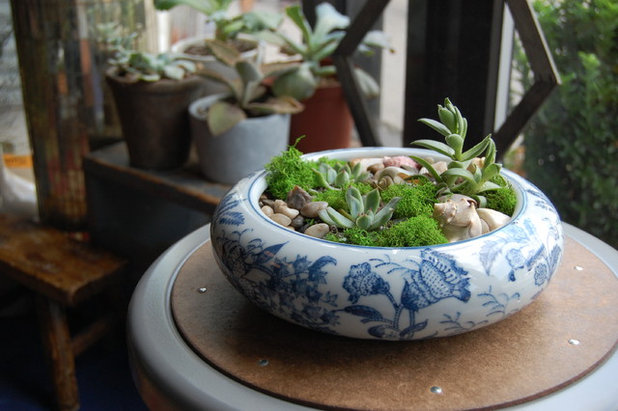
Corynne Pless
Suzanna Cameron, owner of Stems, a flower shop in Brooklyn, New York, is a big fan of succulents. She says the plants “are a fun way to play around with gardening when you live in a city with minimal space and-or enjoy sculpting smaller vessels.” Follow along as she shows how to plant and care for succulents in different containers, from a modern take on a terrarium to a classic dish garden to a plant in a coffee tin.
The best news is that, according to Cameron, “the dish does not have to have drainage as long as you use rocks in the bottom and then a sprinkle of activated charcoal to balance the pH of the soil.”
Cameron collaborated with friend Nick Hess, who owns an antiques store, The Printer’s Cabinet & Curiosities, in Pennsylvania, on these ideas for creative containers. “He really inspired me to start planting succulents in all different types of vessels, like a random trophy or antique metal box,” Cameron says. “I personally love living plants you can repot into basically any vessel, and design-wise I enjoy playing around with them.”
You can use almost any shape container as long as it has a minimum depth of 3 inches, enough to provide room to grow. Consider decorative candle vases, tiny terra cotta pots, empty tins, trophies or teacups. If you plan to use a container that might rust or flake off into the soil and affect the plant’s growth, such as a coffee tin, simply lining the interior with a small plastic bag before planting will reduce the risk.
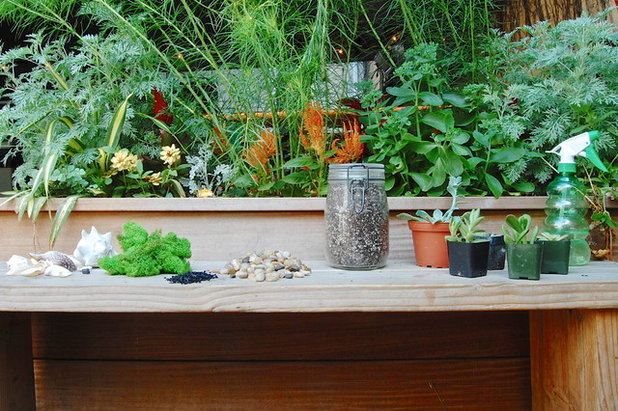
Corynne Pless
Look at flower shops, nurseries, specialty shops or online for small and slow-growing succulents that won’t need to be repotted or replaced too often. “People can buy succulents online very easily. We get ours from The Succulent Source, which is a family-run company based in California,” Cameron says.
What you need:
- Succulents of your choice
- Cactus-succulent potting mix
- Small stones or gravel
- Activated charcoal (available at pet stores or online)
- Moss (optional)
- Shells or other decorative items (optional)
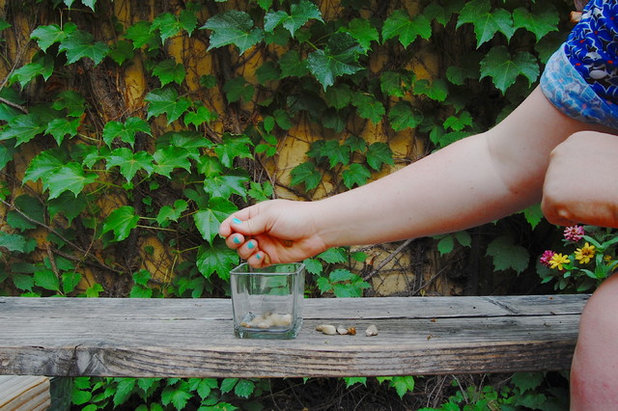
Corynne Pless
A modern twist on the classic terrarium is a glass container that isn’t completely enclosed, which allows succulents to thrive without getting overly wet. We chose a simple glass container and started by layering about an inch of small stones or gravel in the bottom.
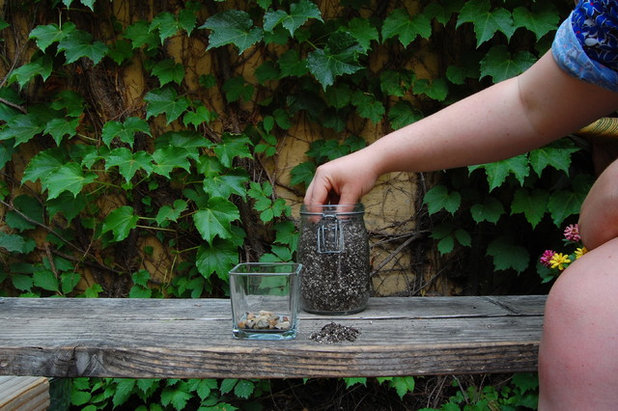
Corynne Pless
Cover the top of the rocks with about a teaspoon of activated charcoal, which acts as a filter. The next step is to fill the container with about an inch of soil.
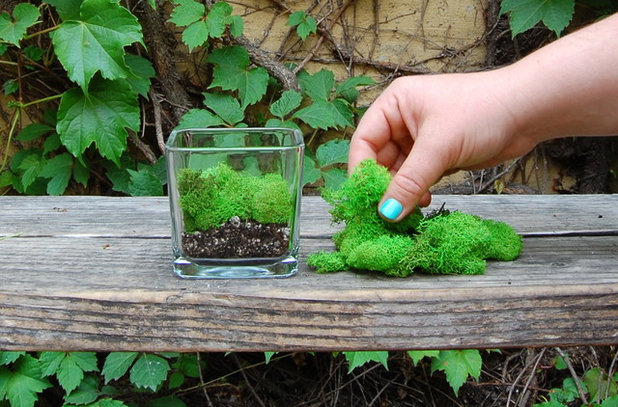
Corynne Pless
Place a few pieces of moss inside the container. “The moss is merely a decorative aspect and it can also be found online,” Cameron says. “This type is called reindeer moss.”
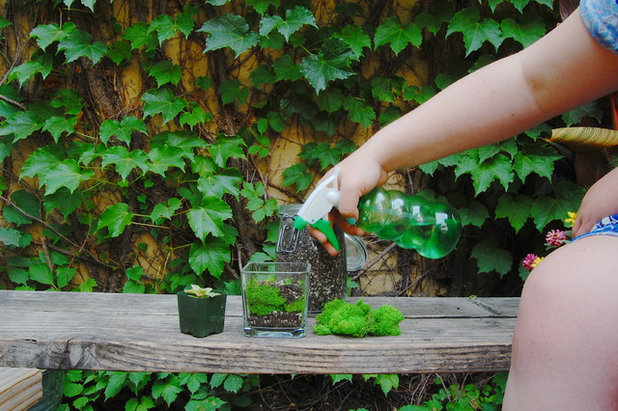
Corynne Pless
Next, add more soil until the container is about three-quarters full.
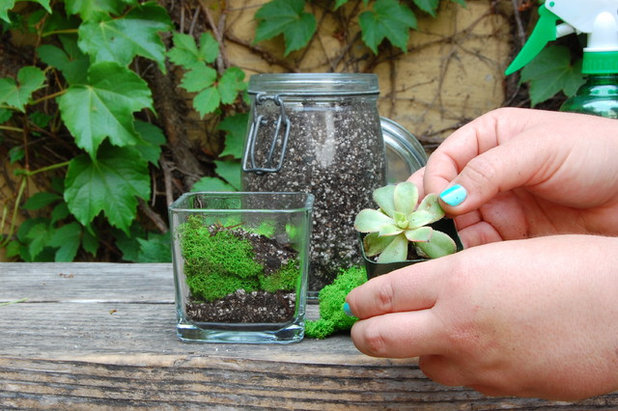
Corynne Pless
Our plant of choice was a standard green echeveria. Gently separate the roots, then set the plant in place and firm the soil around it.
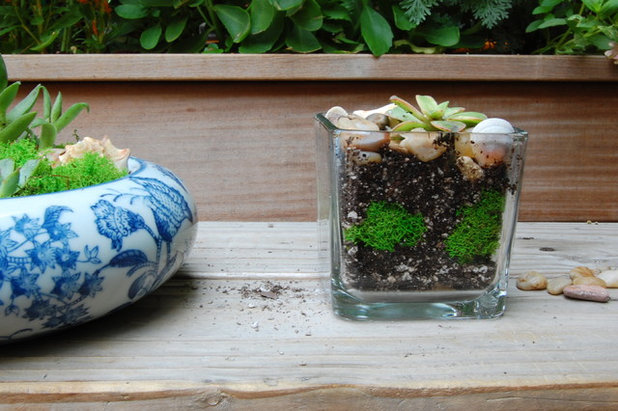
Corynne Pless
Fill in around the echeveria with a couple of shells and rocks to create a miniature garden scene. If you collect shells or stones on your travels, adding them to a terrarium or other plant container is a good way to display them.
The last step is to brush off any loose soil and admire the layers.
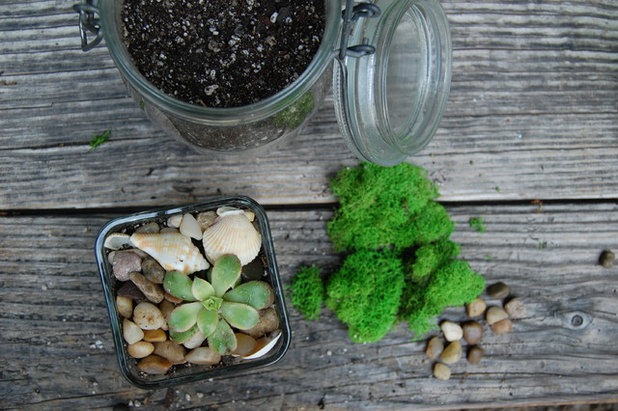
Corynne Pless
The completed miniature garden seen from above.
For all succulents, keep the soil dry while the plant or plants acclimate, then water sparingly. “Succulents will die if they are overwatered, so be aware of watering schedules,” says Cameron. “The best rule of thumb is to water them whenever the soil on top has dried out.” Then water the soil until it is thoroughly moist but not soggy. The latest recommendation is to add water directly to the soil rather than misting, as moisture on the leaves can cause fungus.
Succulents are sun lovers, but too much heat, especially if reflected off a class container, can harm them. Instead, put the container in a spot with bright indirect sun.
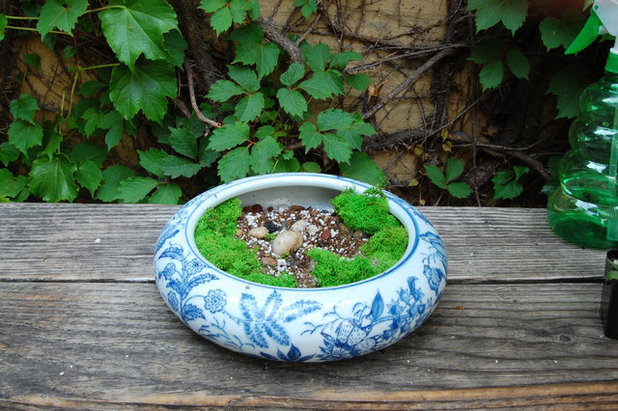
Corynne Pless
You can use this same technique to create a dish garden. Again, start with smaller plants so they won’t quickly outgrow the container. “Matching the vessel size to the succulent is the best way to determine size. If they start to grow beyond their small pot, it’s always a good idea to repot them to provide room to grow,” says Cameron.
Repeat the planting process by filling the dish with stones, charcoal and soil and adding reindeer moss around the edges.
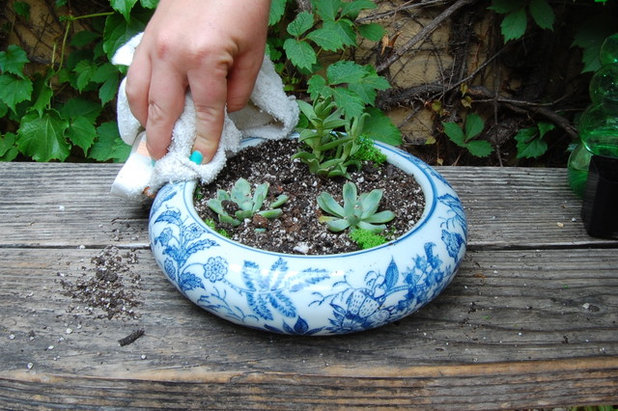
Corynne Pless
Next, plant two standard green echeveria and the taller crassula. Use a towel to wipe the edges of the dish after planting.
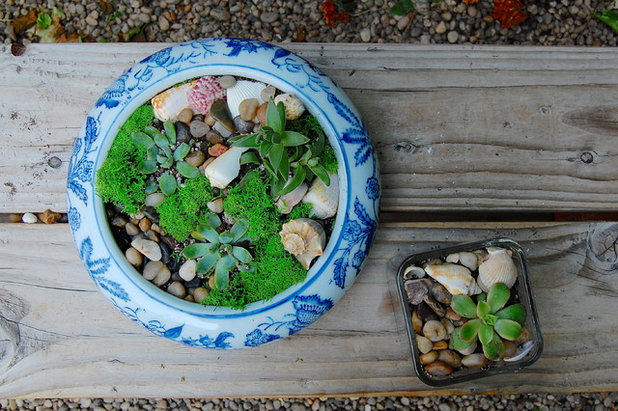
Corynne Pless
To finish the look, add shells or rocks and some more reindeer moss.
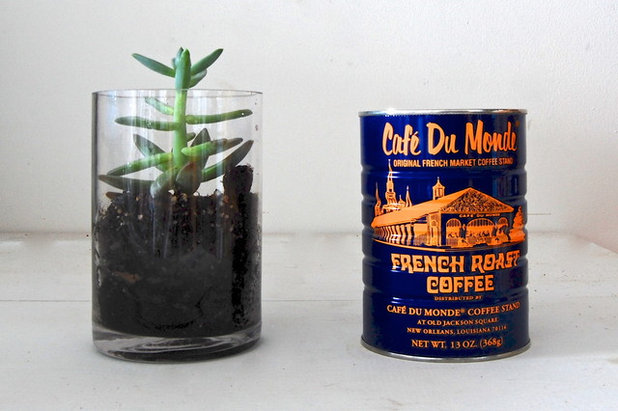
Corynne Pless
Inspired by what Cameron created, I decided to transplant one succulent that I had at home into an empty coffee canister that I like and have kept long after I used up the coffee.
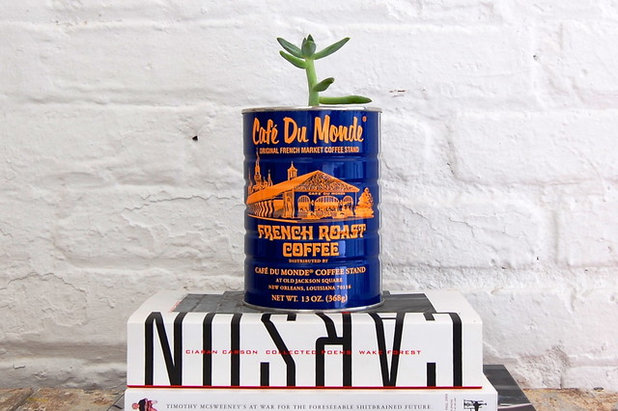
Corynne Pless
Before planting, I lined the tin with a plastic bag to protect the soil from any flaking and the tin’s interior from any moisture, as Cameron suggested. This canister was already the same size as the original container, so I didn’t add any more soil or rocks but simply repotted from the glass container to the coffee tin.
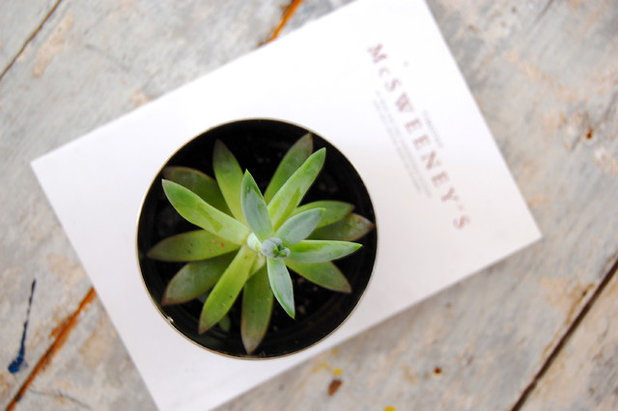
Corynne Pless
An aerial view of my new container and plant.
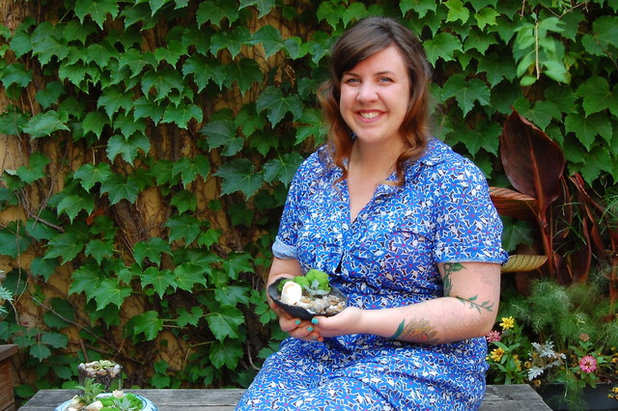
Corynne Pless
Cameron, shown here, opened Stems in 2013. “When I started Stems, my favorite part of the job was connecting with customers,” she says. “Helping people find that perfect bouquet or gift means a lot to me. I want Stems to always be a place people can come and connect. I have customers come in and chat with each other and share their love of flowers as well as their lives.”
More: Gardens Under Glass: How to Make Your Own Terrarium
Bowl Over Guests With a DIY Air Plant Terrarium
3 Steps to Creating Quick, Easy and Colorful Succulent Containers





